The opening of the Joint Uncrewed Aerial Vehicle (UAV) Information Security Laboratory at the Kaohsiung Science Park yesterday was met by protests that ever-changing government policy has significantly increased overhead for drone operators.
The laboratory is part of a comprehensive government plan to regulate UAVs, with the Civil Aeronautics Administration (CAA) expected to propose an amendment to the Regulations of Drones (遙控無人機管理規則) next month.
The laboratory is expected to establish a standard and distribute information security certification for UAVs, the Executive Yuan said in a report.
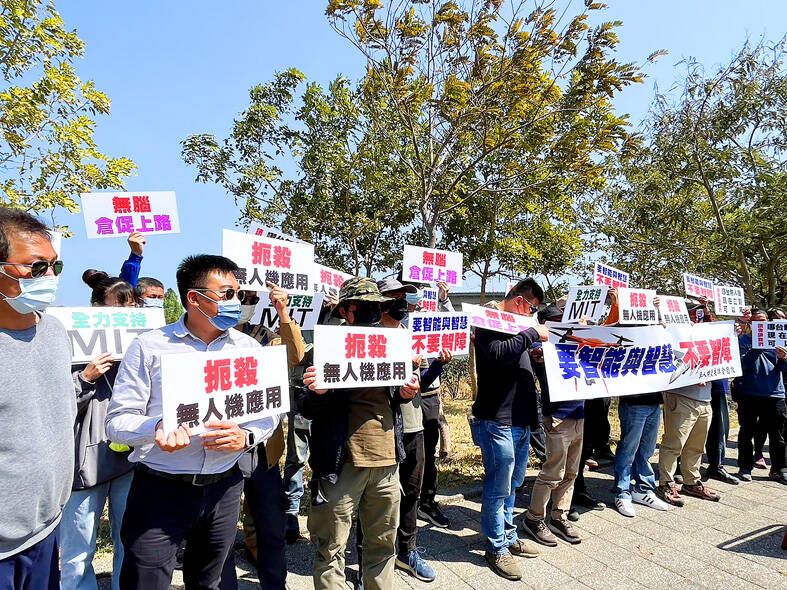
Photo: CNA
The facility can process about 95 drones per day.
A group of about 40 protesters said the government’s changes in policy do not take into account drone operators’ overheads.
Kaohsiung UAV Technician Union member Lo Jui-hao (羅睿豪) said that operators were willing to comply with government policies, but that the ever-increasing rules were unbearable.
“They are killing the development of the UAV industry,” Lo said.
Lo said he spent more than NT$1 million (US$32,693) over two-and-a-half years to obtain certification for his drone, which weighs more than 25kg and is used in agriculture.
Lo said it is absurd that after all that effort, he would have to obtain a separate certificate for information security, adding: “The government’s standards are constantly changing.”
Kaohsiung Remote-controlled Sports Association Director Chen Ching-ting (陳慶庭) said that there are too many CAA regulations, most of which are not enforced, adding that there were “black flight operators.”
Chen said that the government is punishing those who obey the rules and forcing people to operate outside the law.
CAA Director Lin Kuo-hsien (林國顯) said that, in principle, the agency is trying to implement regulations at the source, starting with UAVs manufactured domestically and moving to imported devices.
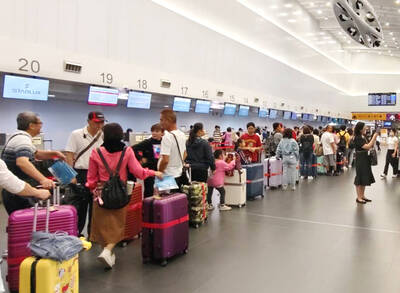
Three Taiwanese airlines have prohibited passengers from packing Bluetooth earbuds and their charger cases in checked luggage. EVA Air and Uni Air said that Bluetooth earbuds and charger cases are categorized as portable electronic devices, which should be switched off if they are placed in checked luggage based on international aviation safety regulations. They must not be in standby or sleep mode. However, as charging would continue when earbuds are placed in the charger cases, which would contravene international aviation regulations, their cases must be carried as hand luggage, they said. Tigerair Taiwan said that earbud charger cases are equipped
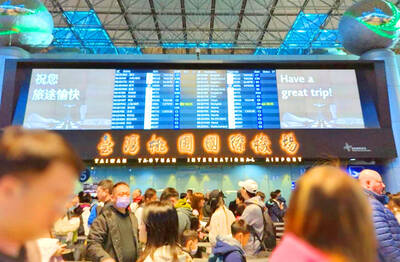
Foreign travelers entering Taiwan on a short layover via Taiwan Taoyuan International Airport are receiving NT$600 gift vouchers from yesterday, the Tourism Administration said, adding that it hopes the incentive would boost tourism consumption at the airport. The program, which allows travelers holding non-Taiwan passports who enter the country during a layover of up to 24 hours to claim a voucher, aims to promote attractions at the airport, the agency said in a statement on Friday. To participate, travelers must sign up on the campaign Web site, the agency said. They can then present their passport and boarding pass for their connecting international
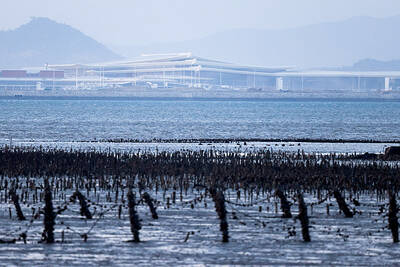
UNILATERAL MOVES: Officials have raised concerns that Beijing could try to exert economic control over Kinmen in a key development plan next year The Civil Aviation Administration (CAA) yesterday said that China has so far failed to provide any information about a new airport expected to open next year that is less than 10km from a Taiwanese airport, raising flight safety concerns. Xiamen Xiangan International Airport is only about 3km at its closest point from the islands in Kinmen County — the scene of on-off fighting during the Cold War — and construction work can be seen and heard clearly from the Taiwan side. In a written statement sent to Reuters, the CAA said that airports close to each other need detailed advanced
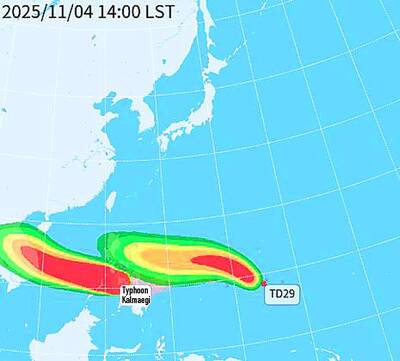
WEATHER Typhoon forming: CWA A tropical depression is expected to form into a typhoon as early as today, the Central Weather Administration (CWA) said yesterday, adding that the storm’s path remains uncertain. Before the weekend, it would move toward the Philippines, the agency said. Some time around Monday next week, it might reach a turning point, either veering north toward waters east of Taiwan or continuing westward across the Philippines, the CWA said. Meanwhile, the eye of Typhoon Kalmaegi was 1,310km south-southeast of Oluanpi (鵝鑾鼻), Taiwan’s southernmost point, as of 2am yesterday, it said. The storm is forecast to move through central